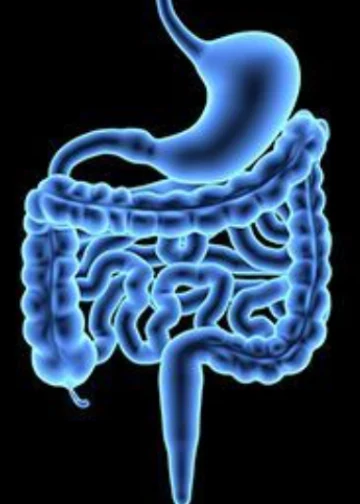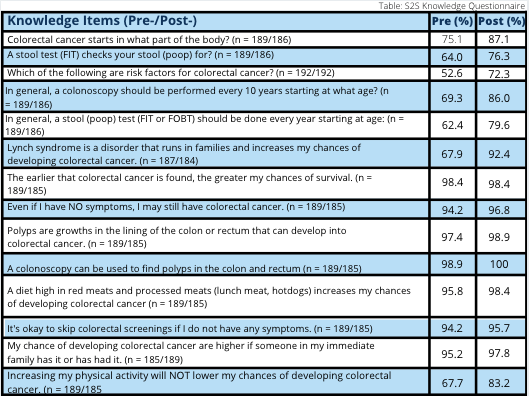Article
Drive-By Flu-FIT Program May Address CRC Screening Decline in Diverse Communities Amidst COVID-19 Crisis
Author(s):
February 3, 2021 - The Drive-By Flu-Fecal Immunochemical Test program not only provides safe and socially distanced colorectal cancer screening opportunities during the coronavirus disease 2019 pandemic, but also may help to address screening declines in diverse communities.
colorectal cancer

The Drive-By Flu-Fecal Immunochemical Test (FIT) program not only provides safe and socially distanced colorectal cancer (CRC) screening opportunities during the coronavirus disease 2019 (COVID-19) pandemic, but also may help to address screening declines in diverse communities, according to data presented during the 2021 AACR Virtual Meeting on COVID-19 and Cancer.1
Among the participants who received FIT (n = 192), 80.3% (n = 154) returned their tests, while 19.7% did not (n = 38). The majority of participants who returned their FIT were found to test negative for the disease (n = 141), while 13 individuals tested positive and were referred to receive a colonoscopy.
“This research shows that a socially distanced, Drive-By Flu-FIT program is feasible, acceptable, and effective in engaging the community [in terms] of CRC education and screening during the COVID-19 pandemic,” Armenta Washington, MS, senior research coordinator at the Abramson Cancer Center, University of Pennsylvania, said during a presentation on the findings. “Novel programs such as this can help mitigate the significant decline in CRC screenings that has occurred as the result of the pandemic, and thus, reduce the burden of CRC in diverse communities.”
During the height of the COVID-19 pandemic, colonoscopy screening rates dropped by approximately 90% and have yet to completely recover. It is believed that this decrease in screening rates will result in a surge of both CRC and breast cancer cases, equating to an additional 10,000 cases within the next 10 years.2 To encourage safe and socially distanced screenings methods that are compliant with COVID-19 restrictions, it is necessary to create novel screening models for CRC, according to Washington.
To this end, investigators implemented the National Cancer Institute’s Screen to Save CRC Screenings campaign, which utilized a socially distanced Drive-By Flu-FIT; this test has previously proven to be an effective method for increasing CRC screenings in diverse communities.3 In the prior study, investigators were able to increase CRC screenings by offering FITs to eligible patients in a high-volume influenza vaccination clinic. Overall, the CRC screening rate increased from 49.2% to 63.2% in those who received the Flu-Fit; this translated to an increase of 14.0 percentage points.
Based on this previous success, investigators hypothesized that a similar strategy could be implemented to circumvent the challenges presented by COVID-19. For example, the approach can potentially overcome workforce disruptions and other patient concerns because it does not require an in-office visit. Moreover, Fit-Flu utilizes risk stratification to determine which patients should be prioritized for colonoscopy and the test is cheaper than a colonoscopy, noted Washington.
For the research, investigators partnered with Enon Tabernacle Baptist Church in Philadelphia, PA, and the Einstein Healthcare Network to host 3 Drive-By Flu-FIT events that were held from October 2020 through November 2020. Individuals were able to register online for these events.
To be eligible for participation, patients needed to be between the ages of 45 years and 75 years and be at average risk for CRC. Individuals who were symptomatic, who had a personal or family history of polyps or CRC, who had a history of inflammatory bowel disease, or who had recently received a colonoscopy or FIT were excluded. Eligibility, registration, and demographic questionnaires were completed electronically through REDCap, a browser-based, metadata-driven software.
Prior to receiving Flu-FIT, participants watched a 7-minute Screen to Save CRC Screening educational video on YouTube. Individuals also completed pre- and post-knowledge questionnaires, as well as an intentions questionnaire.
Those who attended the events had the opportunity to receive a flu vaccine and/or FIT. Participants were able to stay in their cars while physicians in personal protection equipment provided instructions on how to use FIT, return completed tests to a medical collection box at the church, and helped to address any questions.
The mean participant age was 58.9 years, and the majority were women (60.4%). Moreover, 93.8% of participants were Black or African American, 3.2% were Native Hawaiians/Pacific Islanders, 2.9% were American Indian/Alaskan Natives, 2.2% were White, an 1.6% were Hispanic/Latinx. Moreover, the majority of individuals had a college education with no degree (83.0%), while 18.7% had a high school diploma/GED and 1.3% had some high school education with no diploma. Among participants, 15.5% were uninsured and 54.6% had previously been screened for CRC.
Among those who registered for testing (n = 335), 18.8% (n = 63) were deemed ineligible because of their age (under 45 years), the fact that they had a recent colonoscopy (n = 13), they showcased symptoms or signs of CRC (n = 10), or they had a family history of or potential Lynch syndrome (n = 1). Additionally, 23.9% (n = 80) of registered individuals did not show up. In total, a total of 192 participants received FIT.
The S2S knowledge questionnaire highlighted an increase in baseline knowledge in participants who watched the educational video (Table).
Washington AL. Drive by Flu-FIT: a novel way to mitigate the decrease in colorectal cancer screening during the COVID-19 pandemic

“Baseline knowledge about CRC was high, with exception of 4 items related to risk factors of CRC, frequency of FIT, Lynch syndrome, and the relationship between physical activity and the risk for CRC,” noted Washington. “After viewing the video, all knowledge scores increased with the exception of 1 item related to early discovery of CRC and its relationship to survival.”
Baseline knowledge of CRC risk factors was 52.6%, while baseline knowledge of Lynch syndrome was 67.9%; these knowledge scores increased to 72.3% and 92.4%, respectively, in participants who watched the video. Knowledge regarding the relationship between physical activity and CRC increased from 67.7% at baseline to 83.2% following the educational video. Knowledge pertaining to the early detection of CRC remained at 98.4% before and after watching the video.
Additionally, the S2S Intensions Instrument yielded a slight increase in intention scores in participants who viewed the video:
- 4.2% increase in likeliness to discuss CRC screenings with a healthcare provider
- 3.2% increase in likeliness to undergo CRC screenings
- 7.8% increase in likeliness to speak about CRC with family members or friends
- 2.6% increase in likeliness to adopt healthier eating habits
- 2.7% increase in likeliness to increase physical activity
“Novel programs such as this can help mitigate the significant decline in CRC screening that has occurred as a result of the COVID-19 pandemic and, thus, can help reduce the burden of CRC in diverse communities,” concluded Washington.
The results of this pilot will be used to further evaluate a Drive-By COVID-19 vaccine FIT model in the spring of 2021.
References
- Washington AL, Miles L, Melendez C, et al. Drive by Flu-FIT: a novel way to mitigate the decrease in colorectal cancer screening during the COVID-19 pandemic. Presented at: AACR Virtual Meeting: COVID-19 and Cancer; February 3-5, 2021; Virtual.
- Sharpless NE. COVID-19 and cancer. Science. 2020;368(6487):1290. doi:10.1126/science.abd3377
- Potter MB, Somkin CP, Ackerson LM, et al. The FLU-FIT program: an effective colorectal cancer screening program for high volume flu shot clinics. Am J Manag Care. 2011;17(8):577-583.








